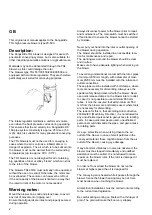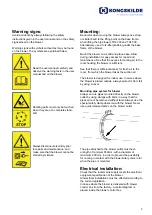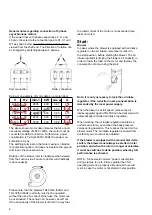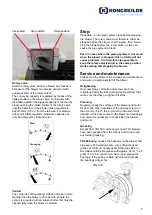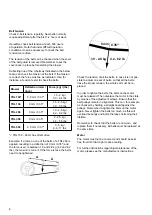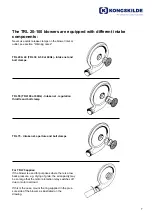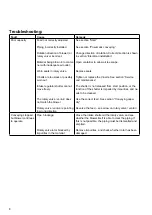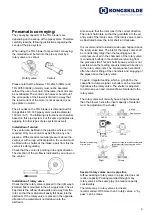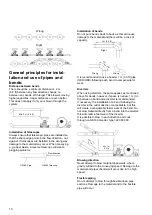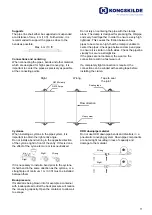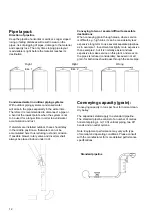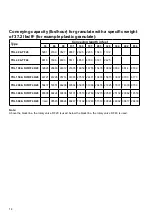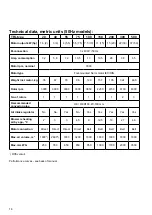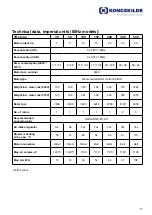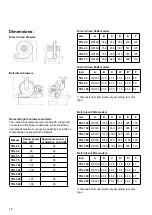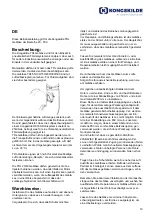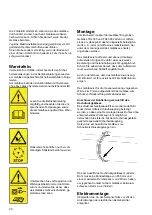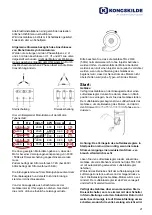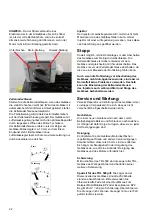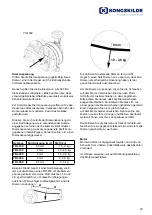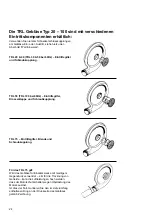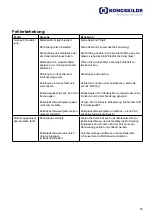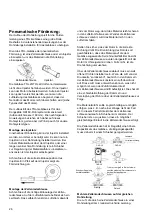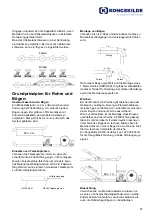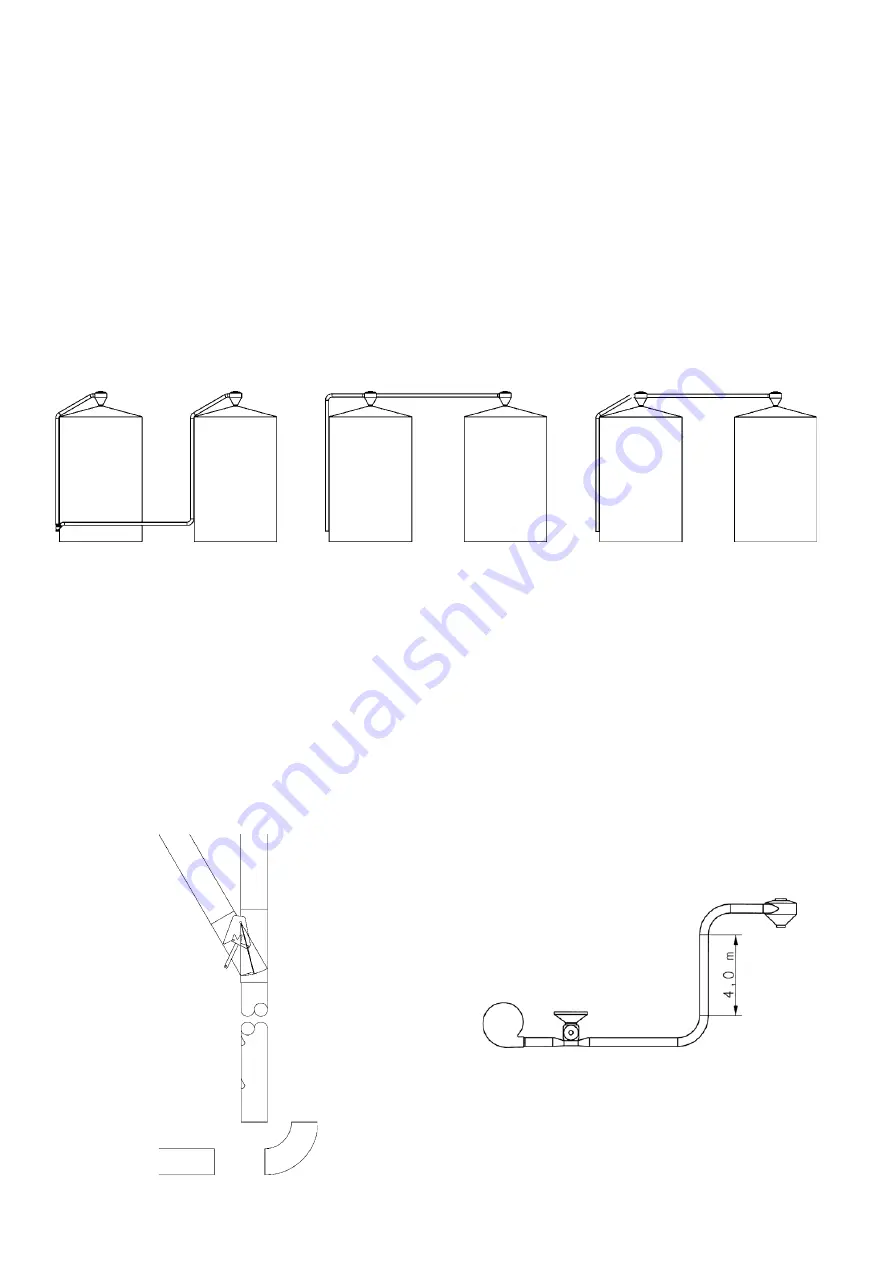
12
Pipe layout:
Direction of pipeline
Keep the pipeline horizontal or vertical. Longer sloped
rising or falling distances will result in wear on the
pipes, risk of plugging of pipes, damage to the material
and capacity loss. The only time sloping pipe layout
is advisable is right before the material reaches its
destination.
Conveying to two or several difficult accessible
destinations
When conveying grain through areas, where service
is difficult, e.g. high silos, it can be considerably less
expensive long term to use several separate pipelines,
as in example 1. Investment is slightly more expensive
than example 2, but it is normally easier and less
expensive to make service on this plant, and wear on
the pipes is reduced considerably, becausen not all
grain for both silos should pass through the same pipe.
Right
Wrong
Eks. 1
Eks. 2
Right
Condensed water in outdoor piping systems
With outdoor piping systems condensed water
will arise in the pipes especially in the winter time.
Therefore it is recommended to disconnect a pipe or
a bend at the lowest points, when the system is not
to be used for a longer time in order to avoid water
accumulation and rust.
If diverters are installed outdoor, these should stay
in the middle position so that water can not be
accumulated here thus reducing rust and corrosion.
If possible blower, rotary valve and diverters shall
always be placed indoor/ under roof.
Conveying capacity (grain):
Conveying capacity in tons per hour for normal clean,
dry barley.
The capacities stated apply to a standard pipeline.
The standard pipeline consist of a number of metres
horizontal piping, 4 m (13 ft) vertical piping, two 90°
bends and an outlet cyclone.
Note: Equipment performance may vary with type
of material and operating conditions. Please consult
with the manufacturer for more detailed performance
specifications.
Standard pipeline
(13 ft)


